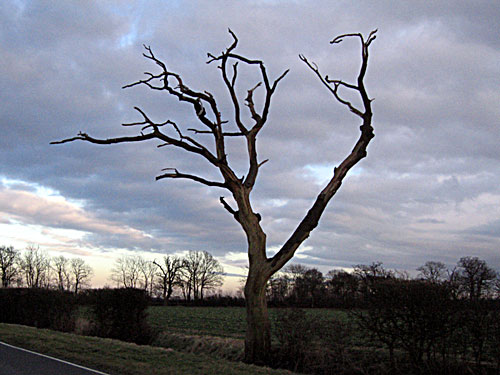
Category Archives: Photography
The explosion in self-portraiture
Interesting piece in the NYT about the prevalence of self-portraits on the Web.
Art historians say that the popularity of the self-portrait is unprecedented in the century-long history of the snapshot. “I think it is probably a new genre of photography,” said Guy Stricherz, the author of “Americans in Kodachrome, 1945-65” (Twin Palms, 2002), which includes snapshots culled from 500 American families. Mr. Stricherz said he reviewed more than 100,000 pictures over 17 years in compiling the book but found fewer than 100 self-portraits. These days you can find as many by clicking through a few home pages on MySpace, Friendster or similar social networking sites.
So what’s going on? Part of the answer is that digital cameras make self-portraits easy to do. Another part is that many people have a camera with them all the time now — in their mobile phones. But is there more to it than that?
Even in previous generations when cameras were cheap, they were generally reserved for special occasions. “In 1960 a person just wouldn’t take a Kodak Brownie picture of themselves,” Mr. Stricherz said. “It would have been considered too self-aggrandizing.”
Psychologists and others who study teenagers say the digital self-portraiture is an extension of behavior typical of the young, like trying on different identities, which earlier generations might have expressed through clothing and hairstyles. “Most of what I’ve been seeing is taking place in the bedroom,” said Kathryn C. Montgomery, a professor of communication at American University, referring to teenage self-portraits. Dr. Montgomery studies the relation of teenagers to the digital media. “It’s a locus of teen life where they are forming their identities, and now it’s also a private studio where they can develop who they are.
“What better tool could they have than one that allows them to take pictures of themselves and manipulate them like never before?”
Aside from the self-indulgent teenager, however, there’s a lot of semi-serious self-portraiture going on. I looked on Flickr, for example, and found two really interesting photostreams — one by a talented (and beautiful) photography student, the other by a busy broadcaster.
Looking at these images, it suddenly occurred to me that in nearly 40 years of being a serious photographer I’ve only once ever photographed someone who appeared to be unashamedly fascinated by the resulting portraits. Most of my subjects seem to be embarrassed by their images — even when the pictures have been, qua pictures, beautiful. And I wondered if it’s significant that the sole narcissist turned out to be a major artist whom I photographed at the beginning of her career.
Hmmm…. These are deep waters, Holmes.
Barcelona
Spring?
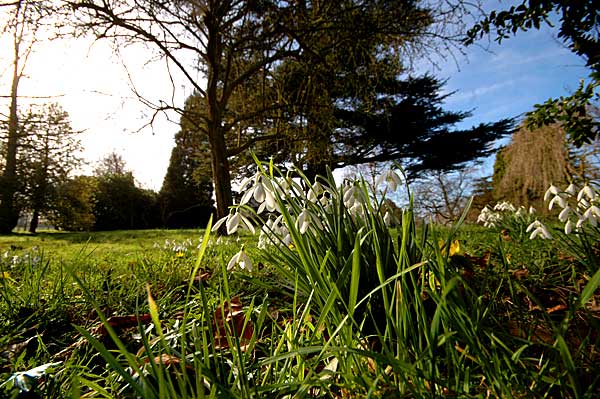
Photographed on a walk with the kids this morning.
Camouflage

Fat Louis, one of Neville and Molly’s cats, perfectly adapted to his surrroundings.
The digital camera market
From David Pogue, writing in the New York Times…
Big changes are in the photographic air. First, there’s the astonishing collapse of the film camera market. By some tallies, 92 percent of all cameras sold are now digital. Big-name camera companies are either exiting the film camera business ( Kodak, Nikon) or exiting the camera business altogether (Konica Minolta). Film photography is rapidly becoming a special-interest niche.
Next, there’s the end of the megapixel race. “In compact cameras, I think that the megapixel race is pretty much over,” says Chuck Westfall, director of media for Canon’s camera marketing group. “Seven- and eight-megapixel cameras seem to be more than adequate. We can easily go up to a 13-by-19 print and see very, very clear detail.”
That’s a shocker. After 10 years of hearing how they need more, more, more megapixels, are consumers really expected to believe that eight megapixels will be the end of the line?
So, what’s next?
In no particular order, Pogue predicts:
Photo arcade
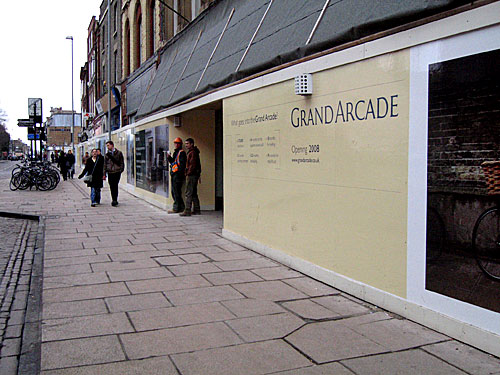
Behind the facade of these buildings in St Andrew’s Street in Cambridge, there’s a huge retail development under way with the optimistic name ‘Grand Arcade’. In a smart move to counter public dislike of the disruption caused by a massive building project right in the heart of a medieval city, the developers commissioned Martin Parr, the populist Magnum photographer, to do a series of photographs under the general heading of “The Cambridge Portrait” which will be displayed over coming months on the hoardings round the site. So far the pictures have been quite nice but not really outstanding. But they do provide opportunities for interesting juxtapositions — as, for example, here,
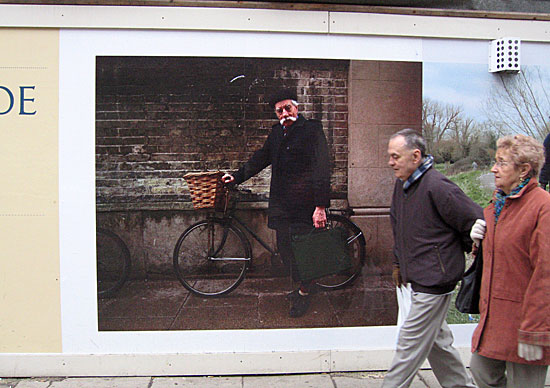
or here.
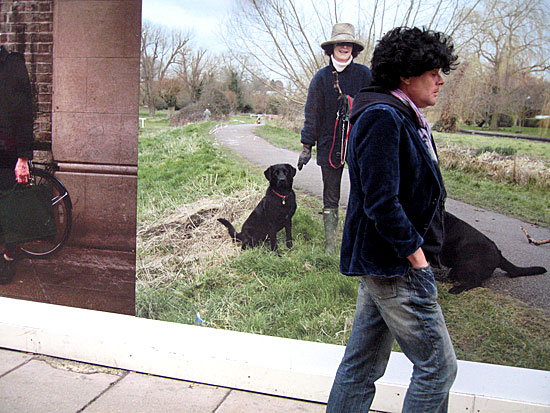
Note for photography buffs: Looking at the images, I had concluded they must have been shot with a Hasselblad, but a visit to Parr’s web site suggests they were made with a truly recondite instrument, the Plaubel Makina 67. Now there’s a really obscure camera for you.
Parr describes himself, btw, as a “mischievous ironist”.
Cambridge by night – 1
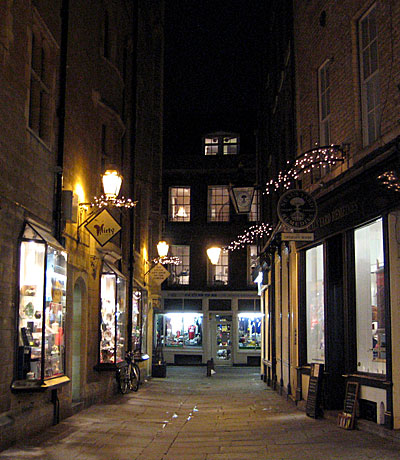
Rose Crescent, looking towards Trinity Street. Snapped as I was walking back after buying an outrageously expensive light-meter battery at the Leica dealer.
Cambridge by night – 2
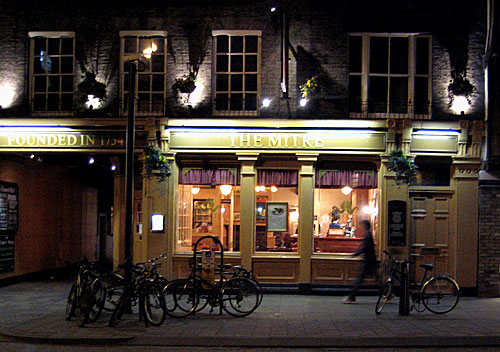
The Mitre in Bridge Street, earlier this evening.
The end of Nikonography
This morning’s Observer column about Nikon’s plans to stop making film cameras.
Nikon’s decision is as profound as the switch from vinyl LPs to CDs in the early 1980s. And the arguments which rage about the merits of analogue and digital photography have echoes of the debates about vinyl versus CD. Digital music is created by sampling the audio signal 44,000 times a second, and hi-fi buffs argued that this degrades sound quality. As someone who could never afford high-end analogue hi-fi systems, however, CDs seemed immeasurably better to me.
But then, I’m no hi-fi buff. I do, however, know something about photography, and there’s no question that digital images are currently inferior to analogue ones. At even moderate levels of enlargement, the differences are obvious. Areas of sharp contrast between light and dark are problematic for digital imagery (try a digital photograph of a leafless tree silhouetted against a bright sky); and colour rendition in low-light conditions can be wacky and ‘noisy’ (flecked with what looks like digital dust).
But to average snappers, the images coming from a digital camera are as good as anything they ever got from film. In fact, they’re better, because more of the duds will have been snuffed out in the camera. They come in a much more convenient form – as files that can be emailed to friends and family or posted on Flickr. And although the camera may cost more to buy, subsequent savings on processing may compensate.
So, for the average punter, film lost the argument with digital ages ago…
